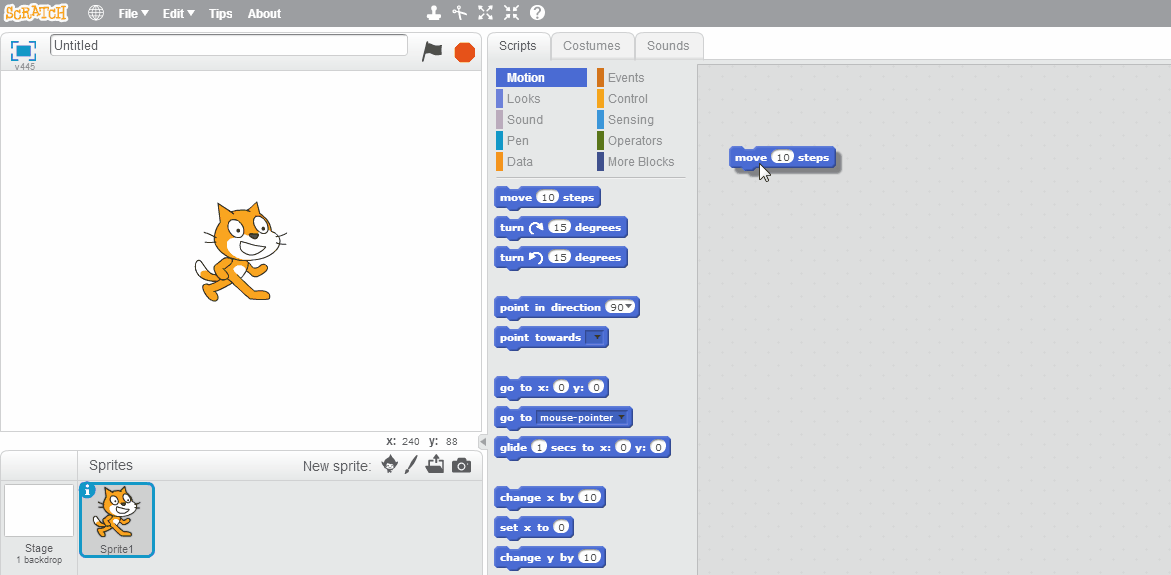Block-based Programming
In learning a programming language, few tools have been as powerful for reducing cognitive load on students learning computer science as block-based programming. In a block-based programming environment, instead of typing program code, you drag and connect graphical blocks representing program code. This means students don’t have to remember and reproduce the exact spelling of program syntax, and blocks can only ‘snap’ together in grammatically correct ways. This eliminates the possibility of making two of the most common families of errors novice programmers face - syntax and grammar errors - and allows them to focus on learning how to solve problems with programs.
While any programming language could be presented in block-based form, a number of pedagogical programming languages (programming languages specifically developed to be easy to learn) have been developed using this approach. These include MIT’s Scratch (pictured above), Berkley’s Snap!, and Google’s Blockly.
Scratch is especially used in elementary and middle school education. It is completely browser-based, and can run on any computing platform (PC, Mac, iPads, Android tablets). It is a multimedia programming environment, where programs can control sprites on a virtual stage. If students create an account, their work is also saved to the cloud, so they can edit their programs both at home and school. Scratch also has plugins for programming many popular robotics and electronics kits. Finally, numerous curriculum resources exist to support teachers interested in using it: Scratch’s Educator Guides, ScratchEd’s Creative Computing Curriculum, Google’s CS First Curriculum, and my own Scratch K-12 Curriculum Materials.
Snap! is similar to Scratch in many ways - it also browser-based and can run on any platform, and provides a multimedia programming environment. It also sports many plugins for robots and electronics. However, its colors are more muted and its blocks are smaller, helping it feel more “professional”. And while Scratch’s core focus has always been approachability, Snap! focuses more on providing additional functionality found in other programming languages (like the recently added map and combine functions). This makes it more powerful, but at a cost of additional complexity. As such, it is less a beginner programming environment than an opportunity for students who have mastered Scratch to explore more complex programming approaches. The Snap! Manual. describes these ideas in detail. Berkley offers a companion curriculum, Beauty and Joy of Computing.
Google’s Blockly is not a stand-alone programming environment, rather it is a tool for creating such environments (in fact, Scratch uses Blockly for its blocks). Blockly is also the basis on which the Code.org programming environments are built, as well as MIT’s App Inventor, which allows you to create Android and iPhone apps using a block-based programming approach.
